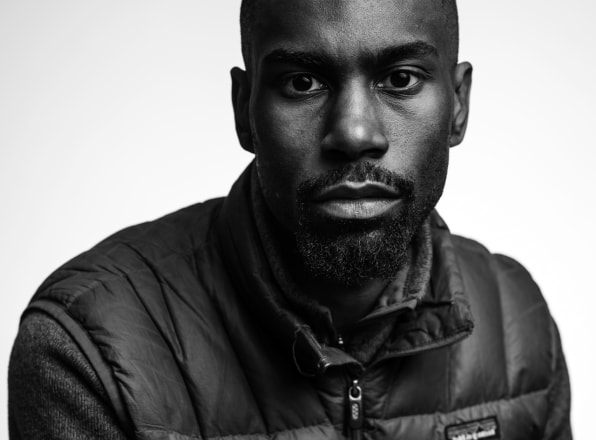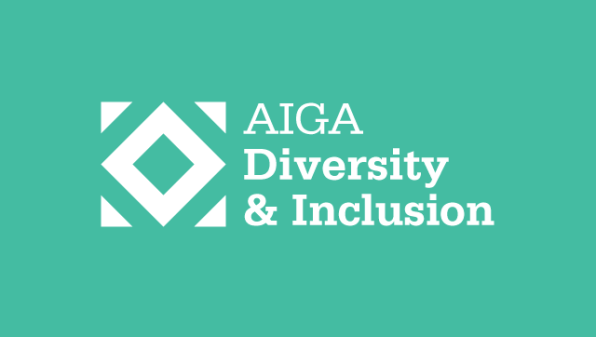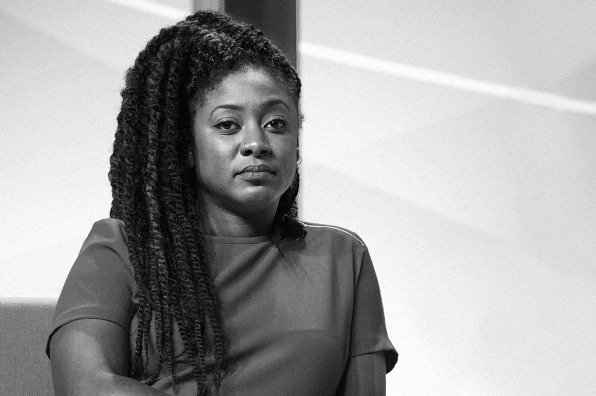Girl in Dress Behind Black Live Matter Protest
A designer's role in social justice movements is no longer relegated to drawing protest posters. Designers can create digital tools and data visualizations that help shape and mobilize a cause. They can use visual communication to connect people across the country, orchestrate action, and inspire policy changes. Nowhere is this better exemplified than with Black Lives Matter, the civil rights movement born on the Internet to protest police brutality.
"This iteration of the generations-old movement for black freedom is coming in the age of technology, and that's really different from any other time in history," says activist Alicia Garza, who cofounded the organization Black Lives Matter, one of several activist networks that helps fuel the movement of the same name. "We can connect with each other across geographical boundaries now. A lot of the ways we use design and technology is based on needing new ways to connect with people and meet people where they're at. We can be more grounded in the problems that they face and in their own processes in helping to design solutions to make a better world."
Last week, two black men–Alton Sterling in Baton Rouge, Louisiana, and Philando Castile in Minneapolis–died at the hands of police officers. At a peaceful rally in Dallas protesting those deaths, a sniper shot and killed five police officers. As the nation grieves this senseless loss, there's also a palpable urgency for change, and many are wondering what they can do to help.
We talked to people within the social justice community and within the design community to see where the two overlap–and what needs activist organizations have that designers can help meet.

The Power Of A Visual Narrative
At 6 p.m. on Tuesday, June 28, Los Angeles-based designer Michelle LeClerc got a call from DeRay Mckesson, an activist and one of the most visible faces of the Black Lives Matter movement. LeClerc had worked as a designer for Mckesson's campaign for Baltimore mayor earlier this year, and now he needed her help with Campaign Zero, a platform for ending police violence that Mckesson founded with three others. They were publishing a report that reviewed police union contracts in 81 American cities and needed LeClerc to design a PDF of it to put online. And they needed it done that night.
LeClerc, who specializes in data visualization, was happy to take on the job–both because she's a supporter of the Black Lives Matter movement and because she realized how much design could help people grasp the document she'd been handed. She divided the report into sections, highlighting key points with large type and pull quotes, and visualized how the union contracts make it more difficult to hold police accountable. She worked on it for five hours straight that night. The website with the report went up the next day.
Mckesson says that LeClerc's treatment of the report was key to helping people understand the systemic flaws and how policy can change them. "At the heart of storytelling is giving people access to the story, and designers can do that," he says. Campaign Zero frequently uses a data-driven approach to highlight police violence and bring about policy-based solutions. The planning team often solicits help from designers they know, and they have a Slack channel of about 100 programmers that they tap into when they need help building websites. "We've worked with incredible designers across the world to help display data in myriad ways to create tools that allow people to take action," Mckesson says.

Ashleigh Axios, the former creative director for the White House and a national board member of the professional design association AIGA, echoes Mckesson's call for storytellers. She is heading up a new initiative from AIGA that aims to engage the design community with social justice issues. "As designers, we have an innate ability to tell human stories in a narrative way instead of in steps and statistics," she says. "Whether it's mass incarceration or police violence in the United States, [designers] have to keep in mind as a community that the narrative we tell makes a difference."
While the AIGA's initiative is still new–right now, there's a call for designers to help shape it–Axios eventually wants to use the AIGA's platform to connect designers with activists, as well as create resources for designers who want to help incite political and social change in their areas. "We're really reaching out to 25,000-plus member and leaders across the community," for their input on how designers can help after the shootings of recent months, she says. "This is a problem across the nation, but it takes different forms locally. What are your local needs and how can we help you in the organization?"

Simple Is Powerful
Axios says that in her four years working under the Obama administration at the White House, the most impactful creative works she saw were also often the most simple. "It's not easy to do, but they are the ones that sum up a controversial issue in a single image," she says. It's an image like artist Dread Scott's "A Man Was Lynched by Police Yesterday" flag that went up outside New York's Jack Shainman Gallery last week, an update of a sign made by the NAACP in the 1920s that is unfortunately still relevant. "Sometimes we try to tell so many facets of the story that we lose the moment when people can sit with one powerful thought, or an idea we can come back to again and again and again," Axios says.
Garza says that she has seen people in the movement use images to highlight contradictions and mobilize others to significant affect. Last month, when Jasmine Richards, an organizer for the Black Lives Matter Pasadena chapter, was convicted of "felony lynching"–an unfortunate term for attempting to liberate someone under arrest–various Black Lives Matter supporters released a new image every day until her release. Last year, the organization also launched a project called I Imagine that asked people to send in video clips of themselves describing a world without racial injustice.
Garza says that while having strength in sheer numbers is important, designers are valuable for communicating a message in novel ways. "Everyone in our sector starts to use variations of the same things," she says with a laugh. "In the social justice world, how many shadow pictures with people with fists up can we use?"

Use What You Know–Then Teach It Others
"One thing that's just true about social justice organizations is that our ideas are in the 21st century but sometimes our methods are not," says Garza. She is talking about a project that they are getting ready to launch that she's keeping under lock and key but says will "engage 200,000 black people in two months." They need more app developers and web developers they can count on for their expertise and a quick turnaround. "It's one thing the community is lacking," she says.
Both Garza and Mckesson say that they have designers they reach out to for certain projects, but they could always use more. The best way to help is to first offer your services, which you can do here at Black Lives Matter and here for Mckesson's various platforms. Both sites have forms that ask for any special skills or experiences that could help. LeClerc adds that information designers can also act on their own, pulling out meaningful statistics or messages from news reports and visualizing them in ways that are shareable on social media.
One of the most meaningful ways people have been using their expertise, says Garza, is by passing it on. "In the past five years or so there's a renewed energy to make sure black folks, people of color, women are being trained in the world of today," says Garza, pointing toward Black Girls Code as one example. "The movement needs those, too. There are brilliant and really skilled people out here who have the benefit of a formal education and years of experience in the field. They have a set of skills and knowledge that could really be beneficial to the movement in the long term for the movement to replicate itself."
related video: Creating A New, Diverse Generation in Tech
[Cover Photo: Max Herman/NurPhoto/Getty Images]
Girl in Dress Behind Black Live Matter Protest
Source: https://www.fastcompany.com/3061779/how-designers-can-help-the-black-lives-matter-movement